Understanding the Distinction Between Mildew and Mold in Apartment Renovation Projects
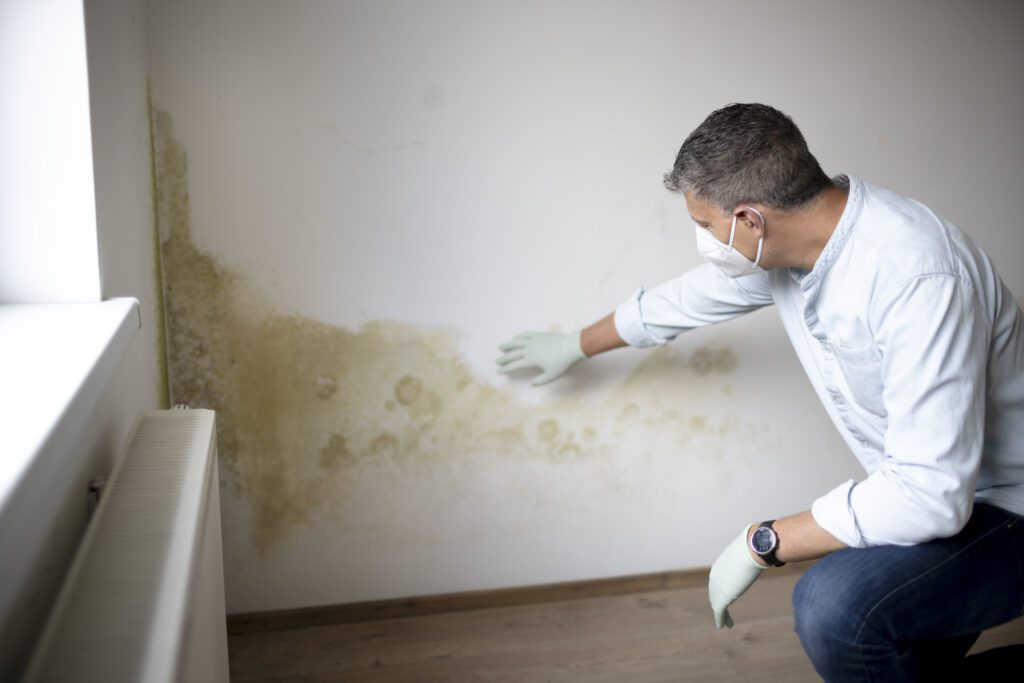
Renovating an apartment can be a thrilling journey. However, amidst the excitement of transforming your living space, it’s essential to pay attention to unexpected issues like mildew and mold. These growths not only affect the aesthetics of your home but also pose potential health risks. Knowing the differences between mildew and mold can significantly impact your renovation success and your well-being. This article will help you understand mildew and mold, providing actionable tips to eliminate and prevent them in your apartment renovation. Understanding Mildew Mildew is often a term used for mold that resides on surfaces. Typically found in warm, damp areas, it usually appears as a powdery or fluffy growth and is typically white, gray, or yellow. You might spot mildew on your bathroom tiles, shower curtains, or the base of indoor plants. While mildew might not seem alarming, it can trigger allergic reactions in some people. For example, studies indicate that around 20% of people with allergies may react to mildew exposure. To efficiently remove mildew, clean affected surfaces with a solution of equal parts water and vinegar, or use specialized mildew cleaners. Ensure proper ventilation in these areas, as it reduces moisture and helps prevent mildew growth during your renovations. Understanding Mold Mold is a more serious issue. It can penetrate materials rather than just sit on the surface, often appearing in shades of black, green, or brown. Unlike mildew, mold can lead to significant structural damage if left unchecked, with one study estimating that water damage can reduce a home’s value by over 25%. Mold thrives in hidden, damp areas like behind walls and under floorboards. While some types of mold are relatively harmless, others can lead to serious health issues, particularly for vulnerable groups such as children and the elderly. Common issues from mold exposure include respiratory problems and severe allergic reactions, with symptoms reported in approximately 50% of sensitive individuals. Removing mold often requires a detailed approach. If found in large quantities, consider hiring the NYTDR professional remediation services to ensure safe and thorough removal. Key Differences Between Mildew and Mold Understanding the key differences between mildew and mold is essential for effective management during renovations: Identifying Mildew and Mold During Renovations To tackle mildew and mold effectively during your renovation, it is crucial to identify any pre-existing issues. Here are helpful steps to follow: Preventing Mildew and Mold During Renovations Preventing the future growth of mildew and mold is crucial to ensuring a healthy living environment. Here are some practical tips to consider during your renovation: Managing Mildew and Mold Issues If you discover mildew or mold during the renovation process, prompt action is necessary: Final Thoughts Understanding the differences between mildew and mold is vital for successful apartment renovations. Taking proactive steps can help you avoid significant health risks and damage to your property. By identifying potential growth areas, implementing effective prevention strategies, and promptly managing any issues that arise, you can create a beautiful, safe living space. Your home should be a haven, free from the dangers of mold and mildew. If your home has suffered damage, don’t wait. Contact NYTDR for a free on-site assessment and find out how we can restore your property and peace of mind.
How to Identify Mold Problems in Your NYC Property

Mold is more than just an eyesore—it’s a silent intruder that can damage your property and impact your health. Whether you own a home or a business, recognizing the signs of mold early can save you from costly repairs and serious health risks. At NYTDR Restoration, we specialize in mold remediation, helping property owners tackle mold problems before they get out of hand. When it comes to protecting your home or business, working with a New York mold specialist can make all the difference. So, how can you tell if mold is lurking in your property? Let’s break it down. What Does Mold Look Like? Mold doesn’t always make a grand entrance—it often starts small, creeping into corners, behind walls, and under carpets. Sometimes it appears as dark spots on the ceiling, discolored patches on walls, or fuzzy growth on furniture. It can be black, green, white, or even orange. If you notice strange stains that weren’t there before, don’t ignore them. Mold spreads fast, and what starts as a small patch can quickly take over. That Smell? It Might Be Mold One of the biggest giveaways of hidden mold is a musty, damp odor. If your home or office has a persistent smell that doesn’t go away no matter how much you clean, mold could be thriving in places you can’t see—inside walls, beneath flooring, or in the air ducts. Trust your nose; if something smells off, it’s time to investigate. The Link Between Mold and Your Health Mold isn’t just bad for buildings—it’s bad for your health, too. If you or someone in your home experiences constant sneezing, itchy eyes, coughing, or headaches, mold might be to blame. Those with asthma or allergies often feel it the most, but even healthy individuals can develop symptoms from prolonged exposure. If you feel fine when you leave your home but start feeling sick as soon as you return, it’s time to check for mold. Your local mold damage repair experts are here to help you breathe easy again. Where to Look for Mold Mold loves moisture, and it thrives in dark, damp places. Some of the most common problem areas include: Bathrooms and kitchens – Under sinks, around bathtubs, and in between tiles. Basements and crawl spaces – Especially if there’s been past flooding or leaks. Attics and roofs – Poor ventilation and leaks create the perfect environment. Windows and doors – Condensation buildup can lead to hidden mold growth. HVAC systems – Mold spores can spread through air ducts, affecting the entire home. If you find mold in any of these areas, it’s time to take action. Testing for Mold: Do You Need a Professional? If you suspect mold but can’t see it, testing can confirm its presence. While DIY mold kits exist, they often fail to detect hidden mold or provide unreliable results. That’s where professionals come in. At NYTDR Restoration, we use advanced tools like moisture meters and air quality tests to uncover mold where it hides. More importantly, as an experienced NYC mold removal service, we don’t just find it—we get rid of it for good. The Next Steps: Get Rid of Mold Before It Spreads If you’ve found mold in your home, don’t wait—mold never stops growing on its own. Small patches can be cleaned with a mix of water and detergent, but larger infestations require professional remediation. Attempting to remove extensive mold without proper equipment can actually make things worse by spreading spores throughout your home. At NYTDR Restoration, we specialize in safe, effective mold removal, ensuring your property is fully restored and mold-free. Whether you need a mold inspection, remediation, or renovation with mold prevention and advice on preventing future problems, we’ve got you covered. Don’t Let Mold Take Over—Call NYTDR Today! Ignoring mold won’t make it go away, but taking action now can save you money and protect your health. If you suspect mold in your property, contact NYTDR Restoration today for a professional inspection. We offer fast, reliable emergency mold remediation and restoration to handle the problem, so you don’t have to.
Water Damage vs Mold: How to Tell the Difference
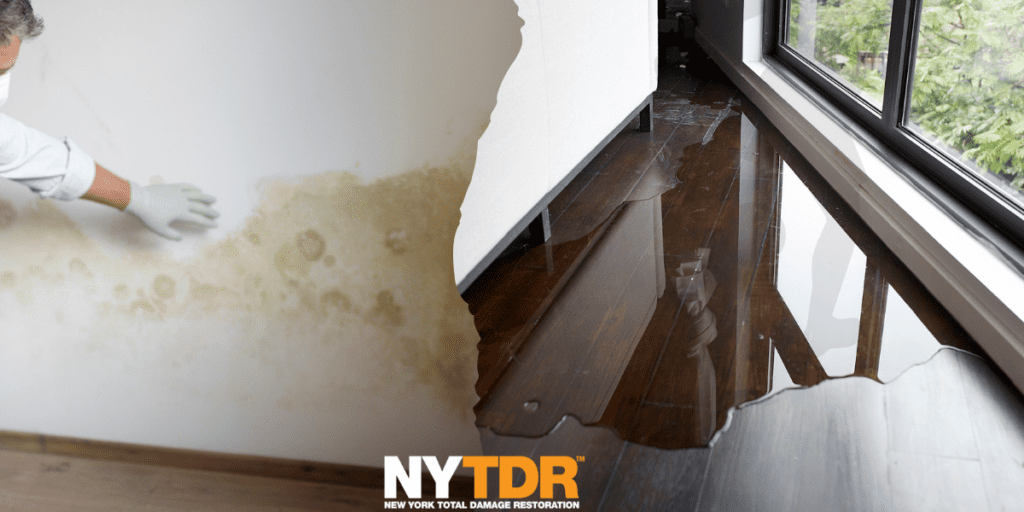
Water damage vs mold often go hand-in-hand, but they are distinct issues requiring different approaches to restoration and mitigation. Understanding their differences can help you identify the problem and take appropriate action. Here’s how to tell whether you’re dealing with water damage, mold, or both. Signs of Water Damage Water damage occurs when excessive moisture causes damage to building materials, furnishings, or other possessions. Here are the key indicators: 2. Warping or Bubbling 3. Musty Odor 4. Visible Water or Puddles 5. Soft or Spongy Surfaces Signs of Mold Mold is a type of fungus that thrives in damp, dark environments. While it often results from untreated water damage, the mold itself has specific characteristics: 2. Persistent Musty Odor 3. Allergic Reactions 4. Rapid Spread 5. Hidden Growth Key Differences Between Water Damage and Mold What to Do Next Prevention Tips Understanding the difference between water damage and mold is crucial for protecting your home and health. Act quickly to address issues, and don’t hesitate to seek professional help when needed. Contact our experts today. You can also call 212.206.1300 to schedule a free consultation and protect your home from further damage.
Mold Prevention Tips for a Healthier Home
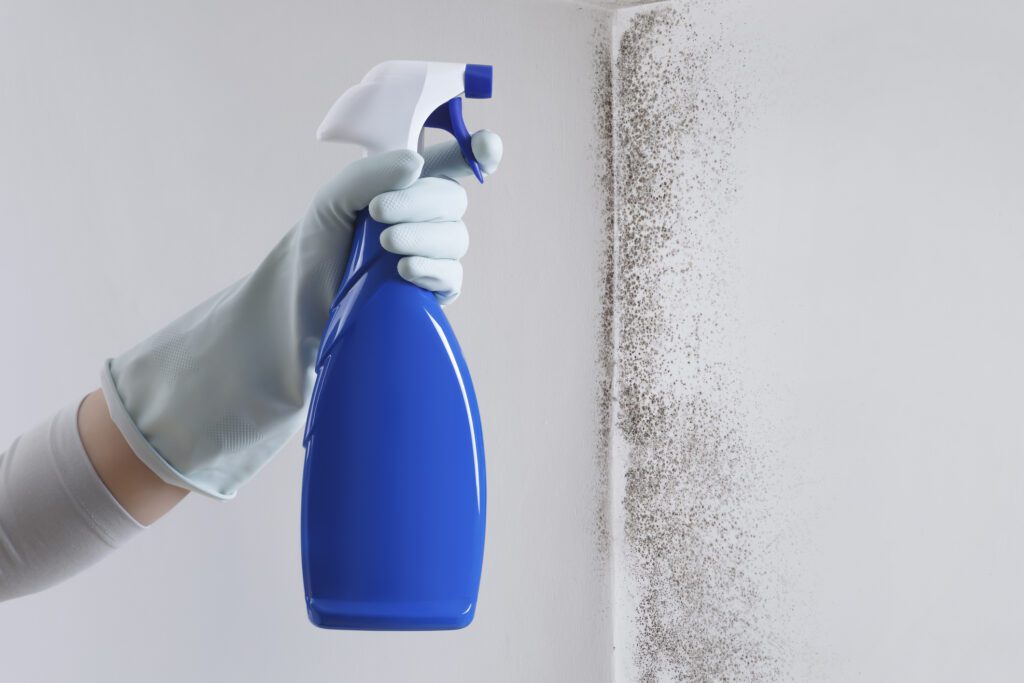
Mold is more than just an eyesore—it can pose serious health risks and cause significant damage to your home. Whether you’re planning a renovation or want to maintain a healthy living space, mold prevention should be a top priority. It’s crucial to know how to prevent different types of molds from taking hold. Here’s a comprehensive guide on what you should do and what to avoid keeping your home mold-free. The Do’s of Mold Prevention 1. Maintain Proper Humidity Levels One of the most effective ways to prevent mold growth is by controlling the humidity in your home. Keep indoor humidity between 30% and 50% to minimize moisture. Invest in a quality dehumidifier for areas like basements and bathrooms, where moisture levels tend to be higher. 2. Ensure Adequate Ventilation Mold Prevention tips start with proper ventilation, especially in high-moisture areas like kitchens, bathrooms, and laundry rooms. Install exhaust fans and use them during and after activities that generate moisture, such as cooking, showering, or drying clothes. 3. Fix Leaks Immediately Leaky roofs, windows, and plumbing can quickly lead to mold growth. Regularly inspect your home for leaks and fix them as soon as they’re detected. A proactive approach to repairs can save you from extensive mold damage down the line. 4. Use Mold-Resistant Products Consider using mold-resistant materials like drywall, paint, and insulation during renovations. These products are specifically designed to resist mold growth and are ideal for moisture-prone areas like bathrooms and basements. Explore our renovation services to learn more about mold-resistant options. 5. Keep Your Home Clean and Dry Regular cleaning and drying of surfaces, especially in moisture-prone areas, can prevent mold spores from settling. Pay attention to hidden areas like under sinks and behind appliances. Learn more about effective cleaning tips to keep your home mold-free. The Don’ts of Prevention 1. Don’t Ignore Musty Odors A musty smell is often the first sign of mold growth. Ignoring it won’t make the problem go away—in fact, it can get worse. Investigate and address any odors immediately to prevent mold from spreading. 2. Don’t Overwater Indoor Plants While indoor plants can improve air quality, overwatering them can increase indoor humidity and contribute to mold growth. Use well-draining pots and avoid letting water sit in the saucers. Discover more plant care tips to prevent mold. 3. Don’t Leave Wet Clothes or Towels Lying Around Wet fabrics can quickly become a breeding ground for mold. Always hang wet clothes and towels to dry immediately and avoid leaving them in the washing machine or piled up in baskets. Besides following mold prevention tips, check out our laundry tips for more ways to keep your home mold-free. 4. Don’t Block Airflow Furniture or heavy curtains placed against walls can block airflow, creating moisture pockets where mold can thrive. Ensure your home’s airflow is optimal by arranging furniture to allow air to circulate freely. 5. Don’t Skip Regular Maintenance Regular maintenance of your HVAC system, gutters, and plumbing is crucial in preventing mold. Don’t neglect these systems—routine inspections and cleanings can prevent moisture buildup and mold growth. Conclusion Preventing mold is all about vigilance and taking proactive steps to control moisture in your home. By following these dos and don’ts, you can create a healthier living environment and avoid the costly damage that mold can cause. For more tips on maintaining a mold-free home or to explore renovation options that incorporate mold-resistant materials, contact NYTDR today. We’re here to help you create a safe and beautiful space.
Common Home Damage Scenarios
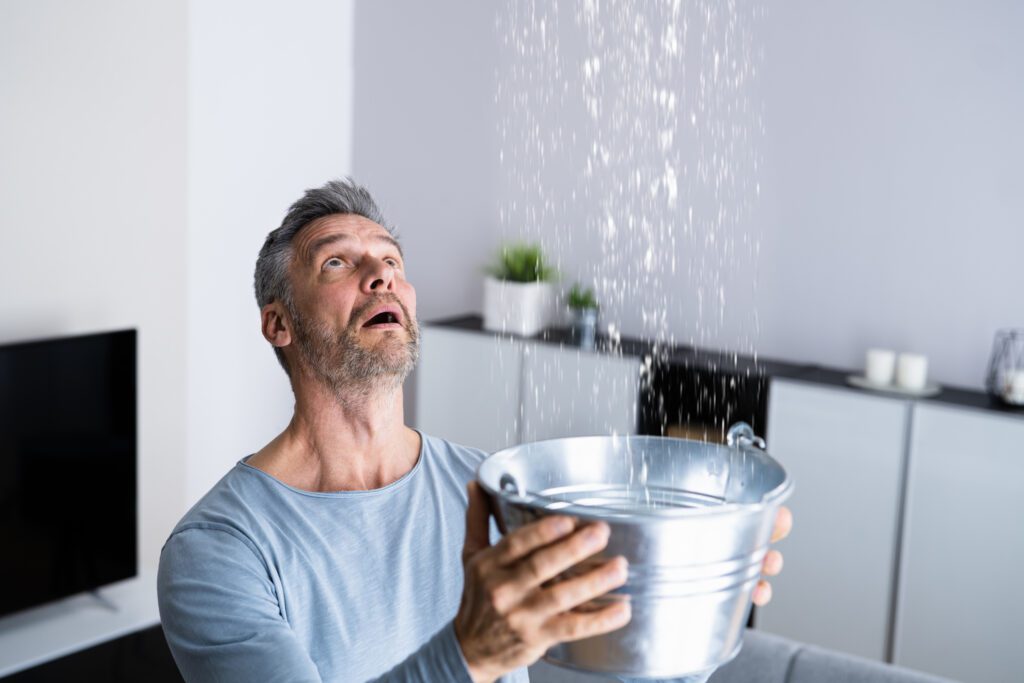
Home damage can strike unexpectedly, leaving homeowners grappling with the aftermath. At New York Total Damage Restoration (NYTDR), we believe that being informed is the first step to preparedness. In this blog post, we’ll shed light on common home damage scenarios, exploring the nuanced restoration processes and insurance claim considerations associated with each. 1. Water Woes: Water leaks and flooding are among the most prevalent home damage issues. Whether it’s a burst pipe, a faulty appliance, or severe weather-related flooding, the impact can be extensive. We’ll delve into the immediate steps homeowners should take, the importance of swift water extraction, and how comprehensive drying techniques are crucial to prevent long-term structural damage. 2. Ravages of Fire: Fire damage can be devastating, leaving homes in disarray. From assessing the extent of the damage to addressing smoke residue and structural concerns, NYTDR will guide homeowners through the complexities of fire damage restoration. We’ll also discuss the emotional toll of such incidents and the importance of a compassionate and professional restoration approach. 3. Nature’s Fury – Natural Disasters: New York City is not immune to the forces of nature. Whether it’s a hurricane, earthquake, or severe storms, natural disasters can wreak havoc on homes. Explore how NYTDR is equipped to handle the aftermath of such events, emphasizing the urgency of a rapid response and the comprehensive restoration measures needed to bring homes back to their pre-disaster state. 4. Mold Menace: Often a consequence of water damage, mold poses its own set of challenges. We’ll delve into the health risks associated with mold, the importance of thorough mold remediation, and how NYTDR employs advanced techniques to eradicate mold and prevent its recurrence. 5. Storm Surge and Wind Damage: Severe weather events can lead to storm surges and wind damage, particularly in coastal areas. Explore how NYTDR assesses structural damage, addresses water ingress issues, and undertakes necessary repairs to restore homes battered by the elements. 6. Insurance Claims Navigation: Each type of home damage scenario requires a tailored approach to insurance claims. Our blog will provide insights into the documentation needed for different scenarios, communication tips with insurance providers, and how NYTDR collaborates with homeowners to ensure a smooth and transparent claims process. At NYTDR, as experienced water damage company in NYC, we understand that no two home damage scenarios are alike. By providing homeowners with knowledge about the intricacies of restoration following water leaks, fire damage, natural disasters, and more, we aim to empower them to make informed decisions in times of crisis. Stay tuned for our upcoming posts as we continue to unravel the complexities of home restoration, offering a beacon of guidance for homeowners in their time of need.
Mold Matters: Why Quick Remediation is Crucial in NYC
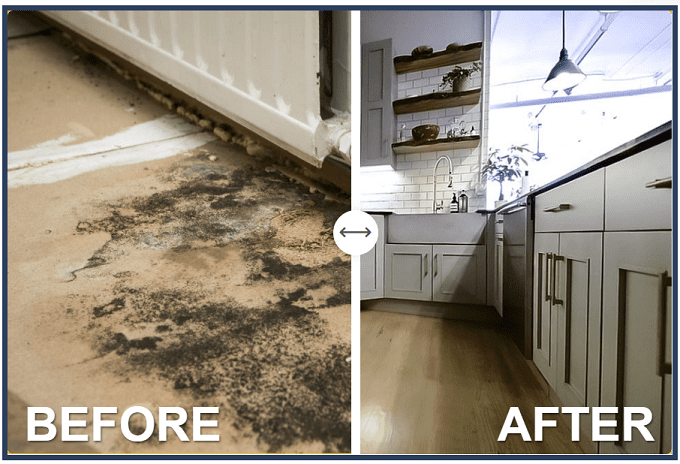
When it comes to your home or business in New York City, mold is not a problem to be taken lightly. The fast-paced lifestyle and unique climate of the city can create the perfect conditions for mold growth. It’s essential to address mold issues promptly and effectively, not only for your health but also for the safety and longevity of your property. At NYTDR, we understand the urgency of mold remediation and are here to help you navigate the process, including acting as your insurance representative. The NYC Mold Challenge: New York City’s climate, with its hot, humid summers and cold, damp winters, can make buildings susceptible to mold growth. Mold thrives in moist environments, and the city’s bustling lifestyle often means that water leaks or moisture problems go unnoticed until they become significant issues. Here’s why quick mold remediation is crucial in NYC: Health Concerns: Mold can trigger a range of health issues, especially in individuals with allergies or respiratory conditions. Symptoms may include coughing, sneezing, eye irritation, skin rashes, and more severe respiratory problems. In NYC, where air quality can be a concern, addressing mold promptly is essential for maintaining a healthy indoor environment. Property Damage: Mold not only poses health risks but can also damage your property. It can weaken structures, stain surfaces, and compromise the integrity of your building. In a city where real estate is a significant investment, preserving your property’s value is paramount. Legal Implications: In NYC, landlords and property owners have a legal obligation to provide safe and habitable living conditions for tenants. Failing to address mold issues promptly can lead to legal complications, fines, or even eviction proceedings. Why Choose NYTDR for Mold Remediation: At NYTDR (New York Total Damage Restoration), we specialize in mold remediation and understand the unique challenges that NYC residents and businesses face. Here’s how we can help: Prompt Response: We understand that time is of the essence when dealing with mold. Our team is ready to respond swiftly to assess the situation and begin the remediation process immediately. Expertise: Our technicians are trained and certified in mold remediation techniques. We use advanced equipment and follow industry best practices to ensure the mold is effectively removed and prevented from returning. Insurance Representation: Dealing with insurance claims can be complex and time-consuming. NYTDR can act as your insurance representative, helping you navigate the process and ensuring that you receive the coverage you deserve. Preventive Measures: We not only remove existing mold but also take steps to prevent its return. This includes identifying and addressing the source of moisture or leaks to ensure a long-term solution. Comprehensive Services: NYTDR offers a range of restoration services beyond mold remediation, including water damage restoration, fire damage restoration, and more. We are your one-stop solution for property restoration needs. Don’t Wait—Contact NYTDR Today: Mold is a problem that won’t go away on its own, and its effects can be far-reaching. In NYC, where the stakes are high, it’s crucial to address mold issues promptly and professionally. At NYTDR, we’re here to ensure that your home or business is mold-free, safe, and healthy. Let us take the stress out of the process, from remediation to insurance representation. Contact NYTDR today, and let’s get started on the path to a mold-free future for your property in the city that never sleeps.
The Different Types of Mold

Mold is a common problem in NYC apartments due to the warm and humid climate. If left untreated, mold spores can cause health issues such as asthma, allergies, and other respiratory problems. It’s important to know what types of mold you may come across in your homes so you can take proactive steps toward prevention and mold removal when necessary. Each type has its own set of risks; some may be more dangerous than others depending on the individual case. Knowing how to recognize these molds will help you better protect your loved ones from potential health hazards caused by exposure. Let’s discuss the common types of molds and what to do if you find them in your apartment. 1. Acremonium Acremonium mold appears white to gray and grows on various surfaces, including wood, drywall, ceiling tiles, carpeting, and insulation. It is widespread in damp environments such as bathrooms and basements with high humidity or moisture levels. It can also spread through air conditioning ducts as spores when disturbed by movement within the home. Exposure can cause health issues such as respiratory problems, skin irritation, eye irritation, and even gastrointestinal upset. Long-term exposure to this mold can also trigger more severe conditions like cancer. The best way to treat an infestation of Acremonium mold is through professional mold remediation rather than DIY methods. NYTDR Professionals will inspect your home for signs of contamination before developing an appropriate treatment plan, including removing any affected materials from your living space and disinfecting remaining surfaces before sealing them off from further fungal growth and water damage. 2. Alternaria Alternaria mold often appears as dark green or black spots on walls, ceilings, and floors. It thrives in areas with high moisture levels, such as bathrooms, kitchens, and basements, where it can feed off materials like wood, paper, and fabrics. Alternaria spores can cause allergies, asthma-like symptoms, and upper respiratory tract infections when inhaled or ingested. Removing Alternaria from your home requires professional services. NYTDR experts use specialized chemical agents explicitly designed for mold removal. They also use air filtration systems to help remove airborne spores, which could aggravate existing health conditions. 3. Cladosporium Cladosporium appears as black or green fuzzy growth on damp surfaces such as walls, ceilings, and floors. The spores can cause allergic reactions when inhaled or ingested, with symptoms ranging from coughing and wheezing to skin irritation and eye inflammation, depending on the level of exposure. Long-term inhalation can trigger more severe conditions, including pulmonary infections, which may lead to hospitalization. Removing Cladosporium from your home requires professional remediation services. NYTDR mold remediation professionals will also take steps to prevent future infestations. They identify potential sources of moisture around your home, such as leaks, poor ventilation, or humidifiers, and take corrective action to reduce the risk of reoccurrence. 4. Ulocladium Ulocladium typically grows in damp areas with water damage, such as bathrooms, kitchens, and basements. It usually appears as gray or black fuzzy growth on walls, ceilings, and floors. Ulocladium spores often cause allergic reactions when inhaled or ingested, with symptoms like coughing, wheezing, skin irritation, and eye inflammation. Removing Ulocladium from your home requires professional services. NYTDR has the skills and experience to handle mold removal and prevent future infestations. Once all contaminated materials are out, these experts use proper cleaning techniques like scrubbing down affected surfaces with detergent and thorough rinsing. 5. Aspergillus Aspergillus mold is common in damp areas such as bathrooms, kitchens, and basements. It appears as a black or green fuzzy growth on walls, ceilings, and floors. Aspergillus spores can cause allergic reactions in some individuals. Long-term inhalation can lead to more severe conditions, including pulmonary infections. Keeping all affected areas clean and dry is vital by regularly checking for water damage and moldy spots, cleaning them with detergent, and allowing them to dry. This should help prevent future outbreaks before they even start. Be proactive with Mold infestations. Mold can be a severe health hazard in New York City apartments as the mold spores can cause respiratory and skin reactions like coughing, wheezing, eye irritation, and more severe pulmonary infections if left untreated. It’s essential to recognize when mold has become a problem within your home and seek a proper consultation with certified professionals from NYTDR. We have experience dealing with water damage and these issues regularly, so we’ll visit your home, evaluate the damage and share a detailed quote for insurance coverage. This way, you ensure complete removal and preventative measures to minimize the likelihood of recurrences.
Where to Check for Mold before Buying Your Next Home
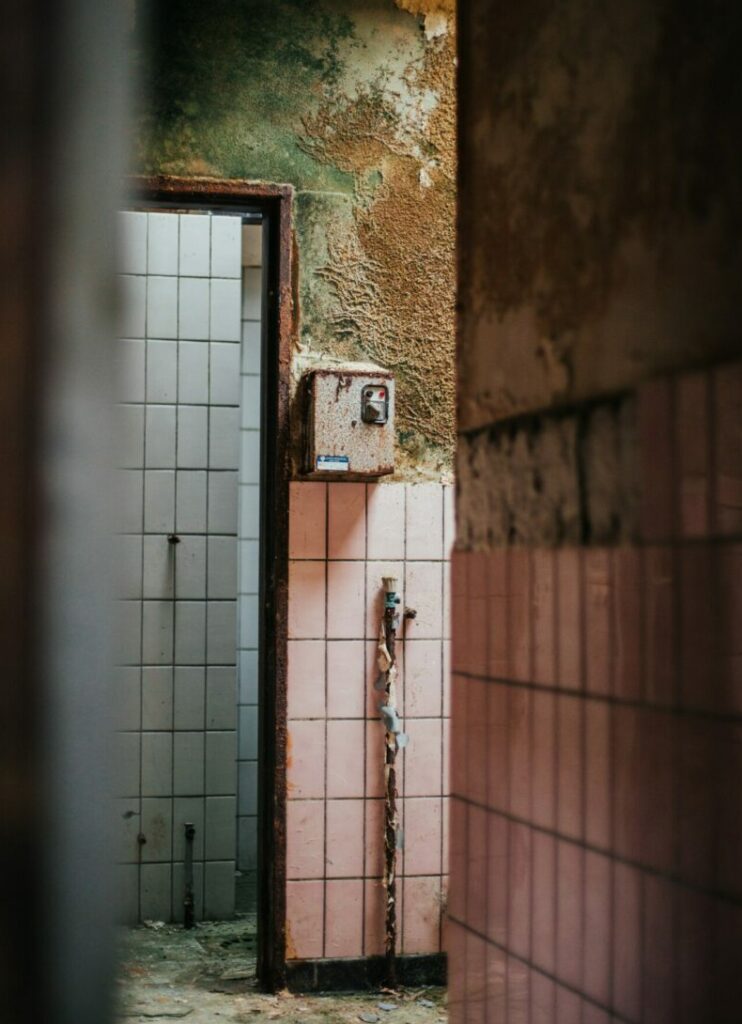
Each year, thousands of homeowners end up buying houses filled with mold. Mold hides anywhere, which is why it’s so important to know the signs of mold before you buy your next home. The last thing you’d want as a homeowner is to clean up costly mold damage that you could have prevented with a little diligence before making such a big purchase. If you suffer from chronic illnesses like asthma or allergies, you know that mold is a trigger. Still, if you have no allergies and a healthy immune system, mold can bring you some health problems. Mold can make you cough, wheeze, have irritant skin and eyes. Mold can grow anywhere. Damp areas like bathrooms are major breeding grounds for mold. You may also be able to tell the presence of mold if you see discolored spots on the floor or wall. It may be easier to see mold in the bathroom but not in a wall cavity in the basement. Sometimes you may fail to see any visible mold does not guarantee that your home is mold-free. Unless you do a proper mold inspection before buying a new home, you are in the dark. Causes of Mold in Your Home Mold is a fungus that grows from microorganisms that float in the air called hyphae. The growth of these microorganisms creates a mold that reproduces in our homes. Mold can trigger an attack in people with lung problems such as asthma. You may fail to locate a mold in the house, though it could be a mold if you smell a musty smell. Mold can be black, purple, white, orange, or green. For mold to grow, it requires; The availability of mold spores A physical surface to grow on Warmth or moist air Oxygen Presence of darkness It would help to know where to check for mold to prevent its development and keep your home healthy. Is having a Mold Inspection necessary? Yes, having a mold inspection is essential before moving into a new home. Mold exposure can cause mild reactions like a sore throat or stuffy nose. Besides, some people may have adverse effects like inflammation of the lung tissues. Therefore, mold inspection would help protect your family from such health problems. How to Determine the Presence of Mold You can spot mold on a surface, or a damp smell could mean that there is mold. But, to be sure, you can use a mold test kit. To test for mold on a surface or in the air you breathe, request help from the experts. The whole testing process takes a few days. Who is at the most risk of suffering from Mold Exposure? Everyone is at risk of exposure to mold. But the most vulnerable group is: The elderly, who have weaker immune systems Children whose immune systems are not entirely developed Expectant women Patients with compromised immune systems, for example, people who have Lupus. Knowing where to check for mold would help keep your home and loved ones safe. Being aware could also help restore your home to better standards. Here is a list of places mold is likely to grow. 1. The Outdoor Spaces Before entering your dream house, have a walk around the house. Check the roofing for any curved or missing parts and ask about the roof age. Check for cracks on the home’s foundation and leveling. Check whether the house gutters are intact. Are the downspouts directed away from or adjacent to the foundation? 2. The Walls and Ceiling Mold can hide on the walls and ceiling of your home without you noticing sooner. Unfortunately, to know for sure if there is mold in your roof, you may need a professional. However, red signs like a musty smell or condensation on your walls and ceiling may be a sign of mold. If the house has wallpaper, you may realize the wallpaper is peeling off. Do not peel off the wallpaper entirely, which could trigger mold spores. If you suspect mold in your walls and ceiling, get help from an expert. 3. In The Living Room Are you buying a readily furnished home? Check the couch and curtains as they can do an excellent job collecting mold spores. Household plants are perfect air fresheners. But, if left unmonitored can promote the growth of mold. So, check that your home greeneries have enough water not overflowing. Again, since you are planning to buy, the fireplace and chimney have not been in use. Therefore, the places are cool and dark, attracting mold spores—the bricks around the fireplace act as catalysts for mold growth as they are porous. 4. The Kitchen The sink is a potential spot for the growth of mold. Food particles and water always run through the sink. Check the faucets under the sink and its cabinet for stains or mildew. Oh, and run water through the sink to confirm whether the pipes are okay. Leaky pipes can be a mold hotspot. Check the kitchen pantry if it is clean, dry, and free from mold. Food often spills on the microwave and stove, making a home for mold growth. So, it is better to be sure that these food-centric places don’t have mold. Remember that there will be much moisture in the kitchen when cooking. Hence, ensure that the kitchen exhaust fan is above the cooking area and works well. Another place to check for mold in the kitchen is the window sills, as they are heaven for mold spores. They feed off these places, so the sills should be clean and dry. 5. In The Bedroom You may be wondering, how can my bedroom be a breeding ground for molds? However, every indoor room is susceptible to decay, so it won’t harm to check. Again, if planning to buy a furnished home, check the mattress. I know the thought of mold on your spongy bed is scary, but yes, it can grow. So, ensure your mattress is clean, cool,
Help Get Insurance to Pay for Water Damage
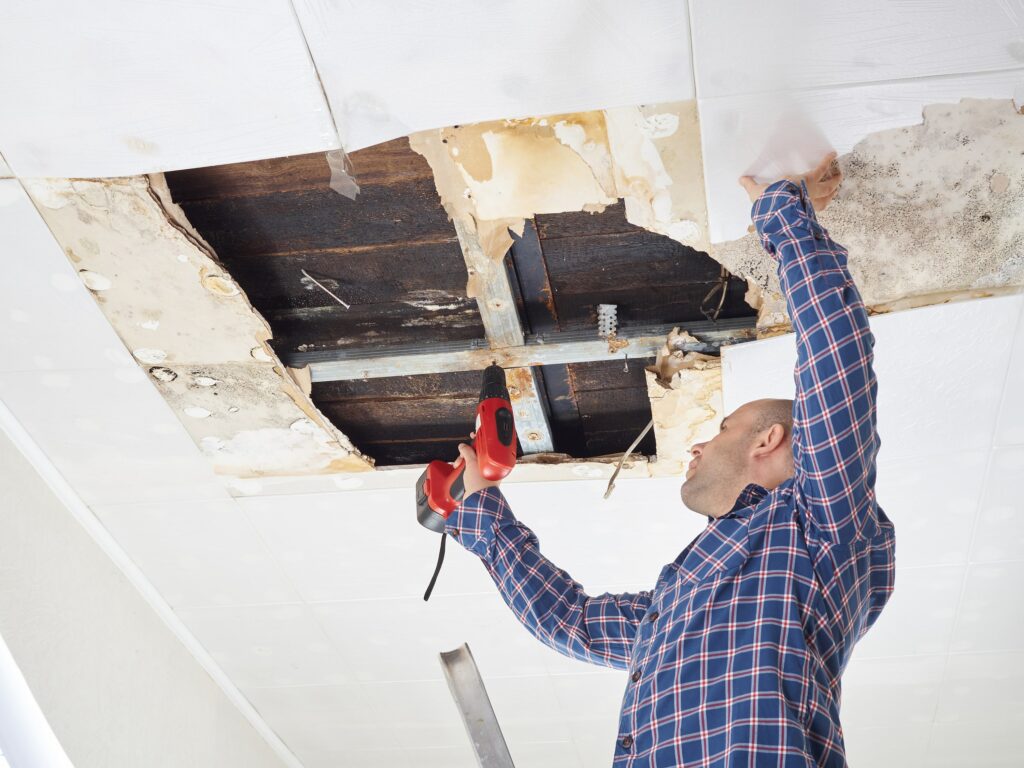
Water damage can be one of the most costly types of damage to repair and replace. Rain, floods, and leaks are unavoidable. When an insurance company receives a water damage claim, they will decide whether or not to pay for the claims based on several factors. If the worst happens, you will have to file for an insurance claim to restore the damage caused by water. Doing regular home maintenance and ensuring that your water system runs smoothly will increase your chances of a payout. The steps of getting the entire insurance claim for water damage in New York City’s apartments include: Step 1 Determine the cause of your water damage and check your homeowner’s insurance policy to see if the insurance company covers the water damage. Insurance Covered Damages You can expect your home insurance to cover sudden or accidental water damage, but not damage caused by neglect or lack of home maintenance. Water damages covered by home insurance include those caused by natural disasters like earthquakes, storms, and hurricanes. You can also claim your homeowner’s policy if there are sudden damages like cracked pipes, a burst in the main water supply, or broken water appliances. Remember, your insurance company might only cover the damage caused by the breaks and not the actual appliances or pipes. Uncovered Damages Individual policies vary on the types of water damages not covered in them. However, the general damages in this category include gradual damage, floods, mold, and damage caused by neglect. In most cases, homeowners need to purchase separate flood insurance because of the extensive damage caused by floods. You can prevent gradual damage and damages caused by neglect. Both damages occur over a long time, giving you time to stop their effect. For example, you can inspect your plumbing system regularly and ensure that it is well-maintained. Sometimes, your water damage might not be a gradual or neglect problem but a mold problem. There are several mold warning signs that you can look out for, including: • You can watch out for mold odor. Most molds produce a persistent musty smell that is not easy to miss • There can also be visible signs of mold growth in your home. Molds come in all colors, so any change you see on your walls or damp places is a warning sign. Ensure you fix all your water leaks to avoid breeding grounds for molds • If you observe water stains or discoloration on your walls, floor, or ceilings, the chances are there is a mold in your home. You should also look out for bubbling, cracking, or peeling paint and wallpapers • Molds may also grow in the aftermath of a flood • Report the claim if the policy covers the damage Step 2 Hire a restoration service to clean up the water and moisture professionally. Determine if you need to leave your home. If the damage is severe, leave your home and allow the restoration to continue. Water damages present the risk of electrocution and unhealthy living conditions inside your home. Step 3 Take photos of the damage and things that you need to replace. Your home restoration team might take these pictures, but it is necessary to have your images. Step 4 Meet with your insurance adjuster, who will evaluate the water damage. The adjuster’s work is to determine the cause of the damage and repair cost. Step 5 Find a contractor to repair the damage once your insurance company processes your claim. In some cases, the company may have its preferred contractors. What can New York Total Damage Restoration (NYTDR) do for you? NYTDR is a restoration company that works directly with your insurance company to repair water damage on your property. It does not matter if the damage is in your kitchen, bathroom, or the whole house. The company will help you get the insurance claim and plan and design your restoration. Licensed repair restoration experts, designers, and construction specialists will remediate and restore your property from start to finish. All you need to do is initiate a free consultation!
Should carpet be replaced after water damage?
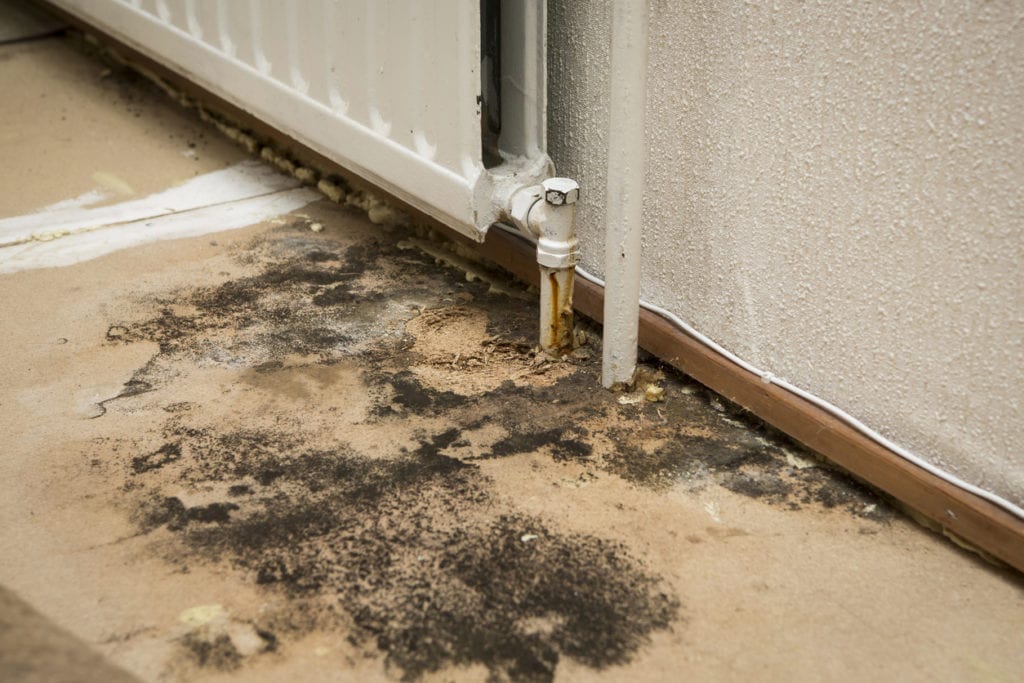
Flooding, leaks and underfloor burst pipes are some of the ways your carpet may get wet. Water damage is a serious issue that many New York residents deal with. It may be due to old infrastructure and pipes, a result of living in apartment buildings and suffering from a neighbors damage, storms and other weather related issues or simply bad luck but when disaster strikes most people are unprepared. While it’s clear that water extraction must take place if your space is flooded, and all dampness needs to be dried out, what can and can’t be salvaged and the potential unseen dangers are murky. Replacing carpets can be a costly expense and clients often ask whether it is really important to strip the carpet if there is a leak or dampness. Understanding what lies under the carpet, the health and safety hazards involved in mold growth from water damage and the potential increase of damage to your property are factors you will want to weigh in when deciding whether or not to replace water damaged carpet. Is Water Damage Visible? While you may think this is a funny question to ask, the truth is that the majority of the real damage that water and moisture cause is not easily seen. Of course, damaged books, toys, mattresses and even furniture are clearly visible following flooding but the damage that water seeping into flooring, carpets and walls does is usually more harmful to your health and safety. Water travels via the easiest route – often this means it can travel far and build up and cause damage far from the original source. A leak in a bath upstairs can result in water damage in the floor, ceiling but also potentially in a different part of the house depending on the easiest route the water finds, so ensuring you actually find both the source and all the damage caused is important. What are Water Damage Health and Safety Hazards to be concerned about? Beyond the damage to your home which is usually fixable albeit at a price, water damage and mold can affect one’s health permanently. For those already suffering from asthma and other breathing issues, mold and dampness can exaggerate the existing condition, increase wheezing, attacks and general overall health. For others who may never have suffered from asthma, COPD or other respiratory illnesses, prolonged exposure to mold and breathing it in can cause them to develop temporary or permanent issues. Other related health issues including rashes and skin conditions can also be caused by mold. If water is actually left sitting, mosquitoes and other flies and bugs are likely to be attracted and be an additional nuisance and possible health hazard. Carpet Water Damage Water damage carpet cleaning Mold in carpet from water damage It doesn’t take more than a little moisture, warmth and dark space to breed mold quickly, carpet is an ideal home for mold to grow. Homeowners who experience even a small amount of water seeping into their homes either from flooding or a broken pipe should be concerned about mold especially when that moisture gets trapped under an insulted material such as carpet. How to treat water damaged carpet The faster you start cleaning up after water damage, the more likely you are to stop mold from growing under your carpet. Calling in mold remediation experts or water damage specialists is usually recommended to ensure the dampness is fully dried out and any damage that has taken place is dealt with before it spreads. If you are attempting to treat the water damaged carpet yourself Extract all water possible. Get hold of water extraction machine to remove as much of the water as possible. Ventilate the room. Open all windows to distribute fresh air and speed drying. Use floor flans to increase circulations and dehumidifiers to remove moisture from the air and carpet. Treat the smell. Carpet smells after water damage, use vinegar or baking soda to remove the odor and freshen up the carpet. How to get rid of carpet odor from water damage Once you have dried out the carpet, use a combination of one cup vinegar to two cups warm water and gently spray the areas that smell. Be sure not to over spray and create new moisture! Sprinkling baking soda once the carpet is dry and then vacuuming or using a carpet spray freshener can also help to eliminate the moist carpet smell coming from the carpet fibers. While all carpet smells following water damage and dampness, lingering water damage smells could indicate the continued growth of mold or mildew, which thrives in damp conditions. If you the carpet odor continues after you have dried and treated the carpet, don’t wait for mold to appear or for your family to start wheezing, call in a mold remediation specialist immediately. Water Damage Restoration Insurance You may be surprised to discover what is or is not covered by your home insurance following water damage. Certain types of water damage are covered, and ensuring you get the maximum coverage from your water damage restoration insurance is usually dependent on having someone professional asses the complete damage and help with submitting the claim. Because damage may be hidden or not visible, an expert will be able to detail the visible and hidden damages which need to be repaired, restored or replaced.
